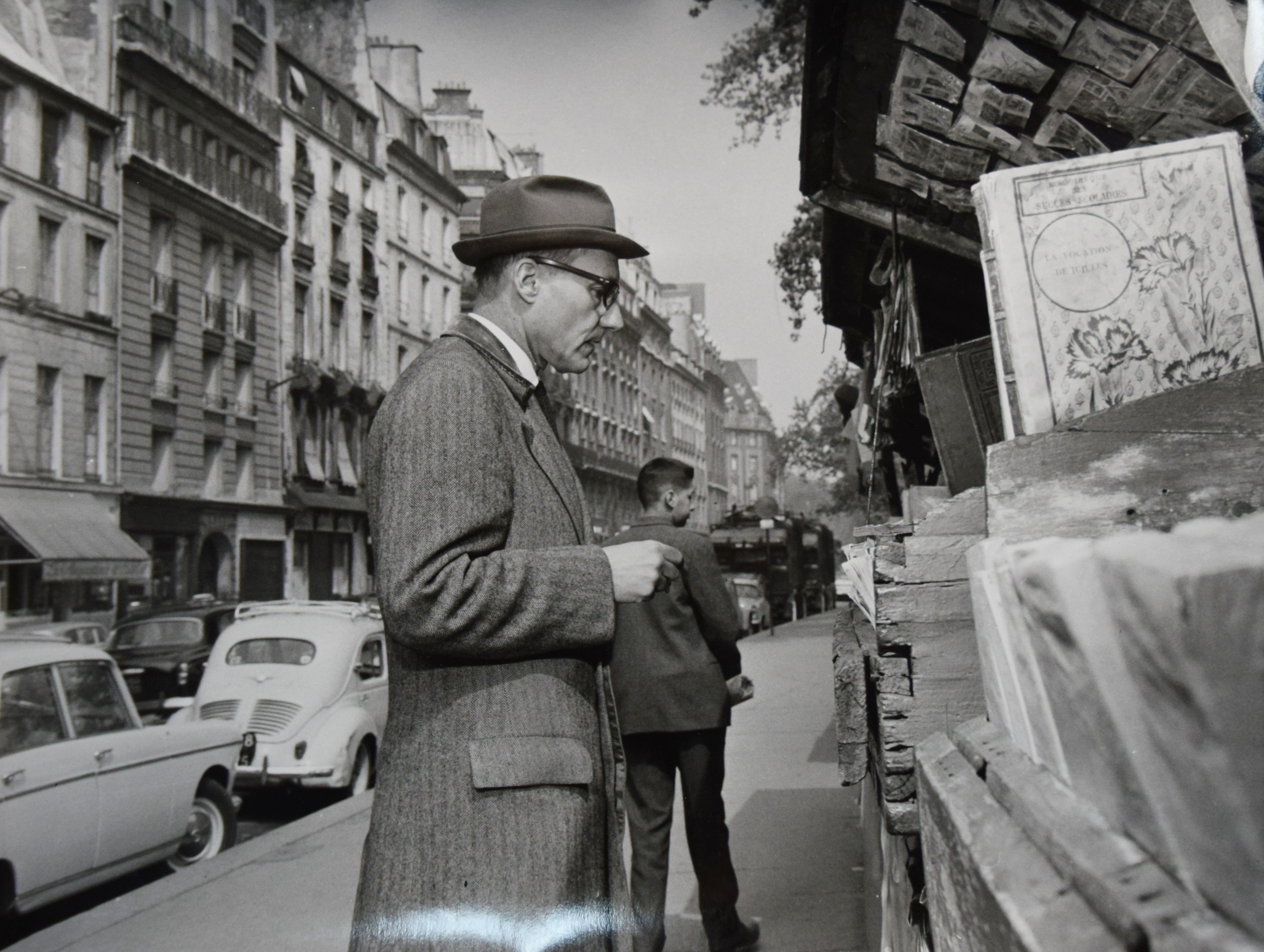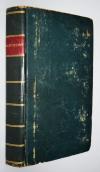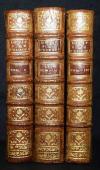Beat Generation – William S. Burroughs bei den Bouquinisten am Seineufer
Beat Generation - William S. Burroughs bei den Bouquinisten am Seineufer
|
Beat Generation – William S(eward) Burroughs (1914-1997, US-amerikanischer Schriftsteller). Orig.-Portrait-Photographie von Aldo Durazzi (Silbergelatine / Silver gelatine). Paris 8. 6. 1962. Format: 30 x 40 cm. W. S. Burroughs bei den Bouquinisten am Seineufer in Paris im Sommer 1962. – Burroughs wurde mit seinem 1959 erschienenen Roman „Naked Lunch“ bekannt; er lebte damals zeitweise in Paris und Tanger. 1961 und 1962 erschien seine „Nova“-Trilogie. – Der bedeutende ital. Photograph A. Durazzi gründete 1956 in Rom die Agentur Dufoto. Seit den 70er Jahren war er Fotokorrespondet für „Time Life“ und „National Geographic“. – „Der Begriff „Beat Generation“ wurde etwa 1948 von Kerouac eingeführt, der so sein soziales Umfeld im Gespräch mit John Clellon Holmes beschrieb. Holmes veröffentlichte 1952 Go, einen frühen Roman über die Beat Generation, und das Manifest This is the beat generation in der Sunday New York Times. Das Adjektiv beat aus dem Slang der Kriminellen, den Herbert Huncke in die Gruppe um Kerouac, Ginsberg und Burroughs einbrachte, hatte die Bedeutungen „besiegt“, „müde“ und „heruntergekommen“, aber Kerouac prägte zusätzlich die Bedeutungen „euphorisch“ (upbeat), „seligmachend“ (beatific) und in Bezug auf Musik, vor allem Bebop, auch being on the beat („im Rhythmus sein“)“ (Wikipedia). – Rückseitig mit Stempel einer italienischen Foto-Agentur, wohl späterer Abzug. – W. S. Burroughs at the bouquinistes on the banks of the Seine in Paris in the summer of 1962. – Burroughs became famous with his novel “Naked Lunch”, published in 1959; he was living in Paris and Tangier at the time. His “Nova” trilogy was published in 1961 and 1962. – The important ital. Photographer A. Durazzi founded the Dufoto agency in Rome in 1956. From the 1970s he was a photo correspondent for “Time Life” and “National Geographic”. – “The term ”Beat Generation“ was introduced around 1948 by Kerouac, who used it to describe his social environment in a conversation with John Clellon Holmes. Holmes published Go, an early novel about the Beat Generation, in 1952 and the manifesto This is the beat generation in the Sunday New York Times. The adjective beat from the slang of the criminals, which Herbert Huncke brought into the group around Kerouac, Ginsberg and Burroughs, had the meanings “defeated”, “tired” and “run-down”, but Kerouac also coined the meanings “euphoric” (upbeat), ‘beatific’ (beatific) and, in relation to music, especially bebop, also being on the beat (“being in the rhythm”)“ (Wikipedia). – Stamp of an Italian photo agency on the reverse, probably a later print.
Unser Preis: EUR 500,-- |

|







